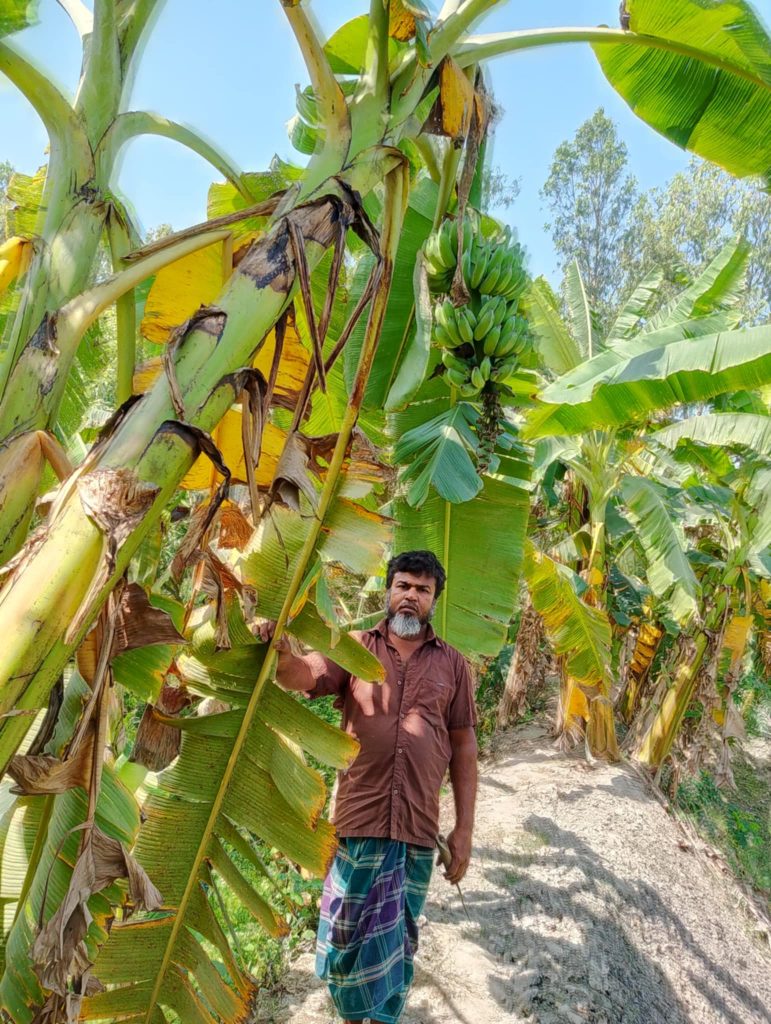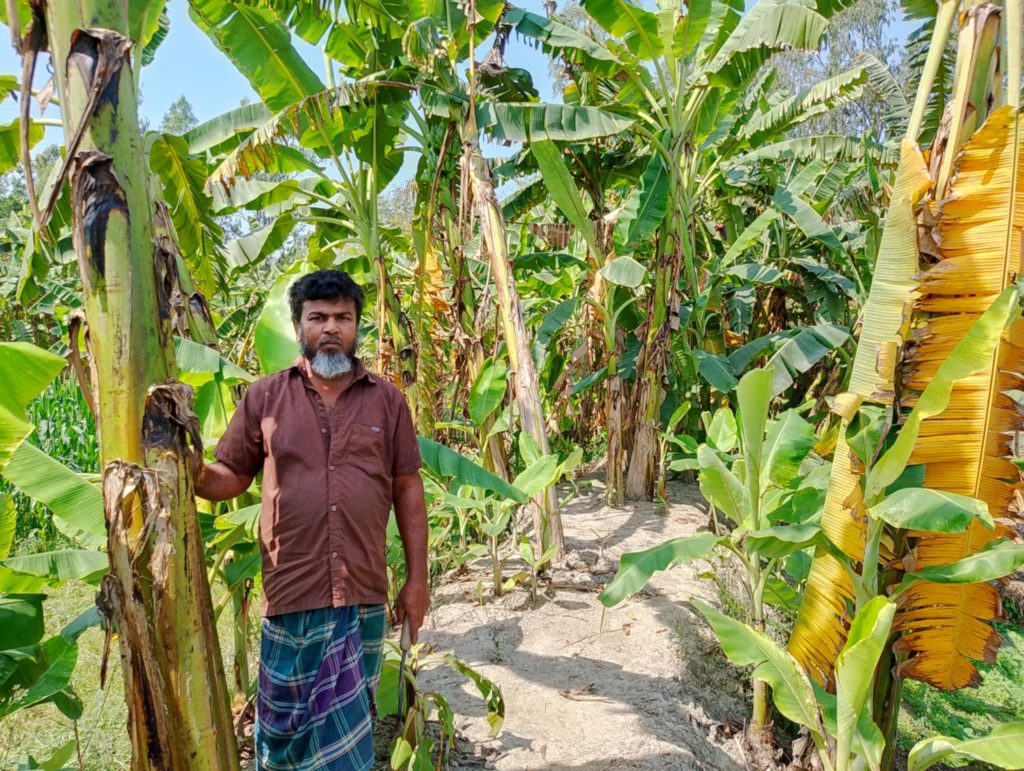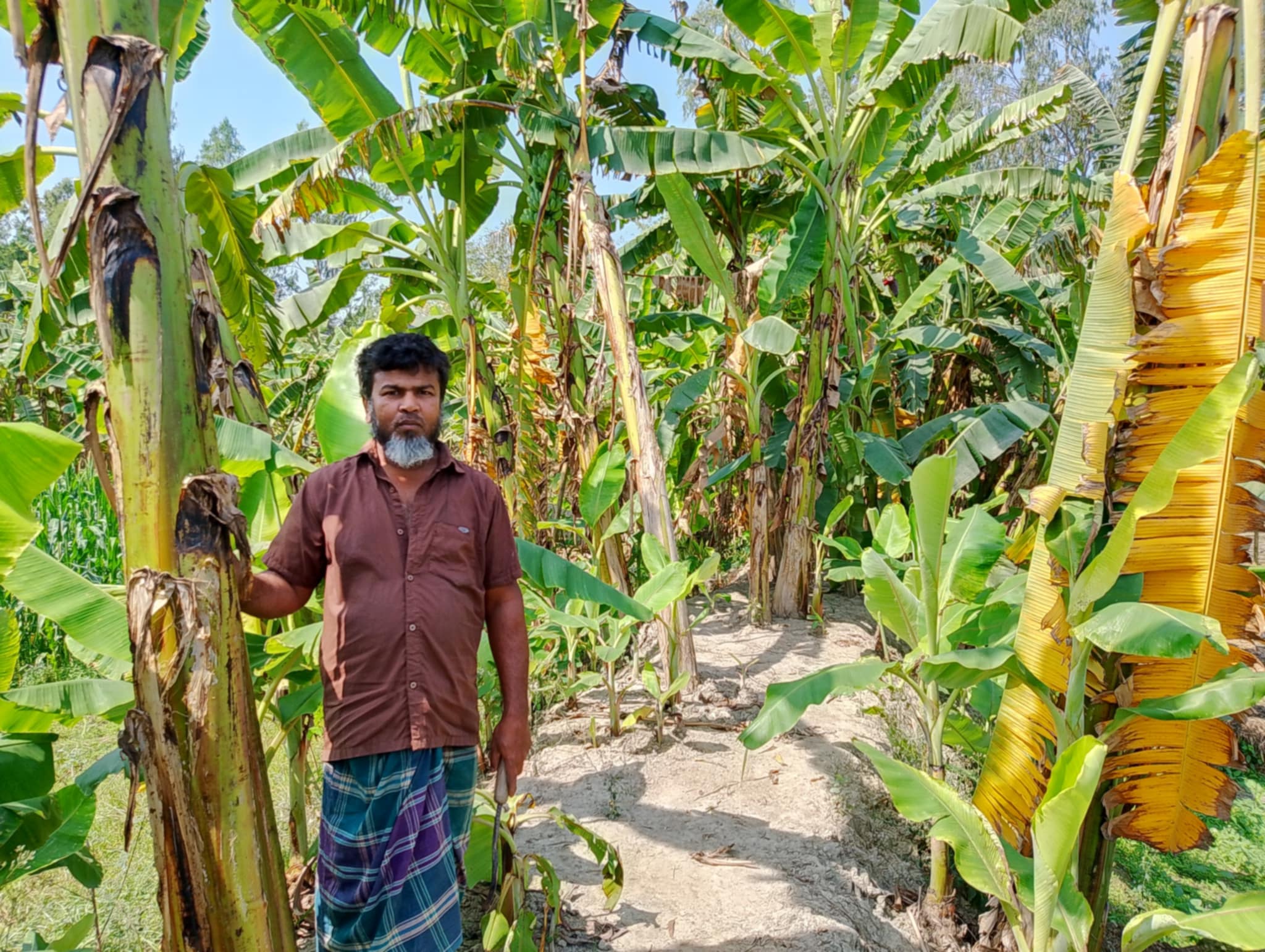Satyaranjan Saha, Harirampur, Manikganj
‘I live alongside the Padma River. During the months of Phalgun and Chaitra, sandy chars emerge on the Padma’s riverbed, while in Ashar and Shravan, deep waters cover the land. During the monsoon, rainwater and the Padma’s currents deposit fertile silt across the fields, enhancing agricultural production. We cultivate crops based on soil type and land elevation high, low, or medium lands. We rely on agricultural inputs like seeds, organic fertilizers, pond water, and rainwater for cultivation. By investing our labor and utilizing permanent resources, we can achieve profitable farming.

Our greatest assets are the Padma River, fertile fields, and the diverse birdlife that contribute to successful farming. The alluvial soil and native seeds ensure the production of safe food. In the Bahirchar fields, we cultivate sesame, foxtail millet, flaxseed, mustard, jute, wheat, pigeon peas, maize, spices, vegetables, and rice. Bananas grow well along roadsides and pond embankments. There is high demand for locally grown, safe bananas in the market. All cultivated crops provide balanced nutrition for both humans and animals. Producing various crops both at home and in the fields plays a crucial role in food security, says Iman Ali, a farmer from Bahirchar, Harirampur.
Jakir Hossain, a farmer from Algi Char, Harirampur, mentions that banana cultivation is limited in the char and lowlands near the Padma River. However, bananas thrive on higher ground, such as pond embankments and roadsides. On my 30 decimals of pond embankment land, I cultivate different banana varieties, including Bichi Modna, Modna, Sorbi, and Anaji. Planting bananas on pond embankments prevents soil erosion and improves fish farming. We consume Anaji bananas as a vegetable, while other varieties are eaten ripe or sold in the market.
The first year’s yield is excellent, but after 10 years of continuous cultivation, productivity declines. To address this, I remove old plants from one section and replant new banana saplings. By adding alluvial soil from the lowlands around the banana roots, I avoid using chemical fertilizers and pesticides. Mixing cow dung and vermicompost with the soil boosts banana production. My pond embankment ensures year-round banana cultivation, and I earn 200,000 BDT annually from banana sales.

BARCIK supports banana cultivation by providing Anaji banana saplings and expert guidance. We have distributed saplings and cultivation knowledge to 40 farmers and neighbors, encouraging banana farming in the community.
Bananas are available year-round in Bangladesh. Banana farming requires low investment but yields high profits. In Harirampur, floodwaters submerge fields during the monsoon, but the elevated pond embankments allow successful banana cultivation. Since banana farming is still rare in this area, local bananas are in high demand and fetch good prices.
Cultivating diverse crops ensures better livelihoods for all. Maintaining soil health is crucial for sustainable farming, as fertile and balanced soil enhances crop yields.

